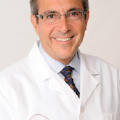In my 40-plus years of practicing dentistry, and in that same time having lectured to tens of thousands of dental professionals, I can say that, hands down, there is one area of dentistry that frustrates dentists more than anything else. This condition has three letters in its name that can send shivers down the spine of every dentist: TMJ.
The most interesting part of this condition that we colloquially call TMJ is that it’s the only disorder that is named for the anatomy it affects. In my practice, when a patient comes in and says, “I have TMJ,” I say, “What a coincidence! I have two of them!” Patients never seem to get the joke—usually because they have been suffering from a TMJ disorder for quite a while.
TMJ has become a catchall name to describe any pain in the head and neck. I have had numerous patients over the years tell me that they have head and neck pain, and both medical and dental professionals told them they have TMJ. Most medical professionals immediately tell the patient to go see a dentist, and some medical professionals have admitted to me that they just don’t want to deal with it. Most dental professionals have very little idea about how to properly evaluate for this disorder and will reflexively make a patient a bruxism appliance in hopes that it might, in some way, help the patient. Medical and dental professionals lack a systematic protocol to approach helping these patients.
Bouncing patients
More often than not, patients bounce around between many medical and dental professionals and suffer from their TMJ/orofacial pain conditions for years. I have had many patients who have seen countless professionals, none of whom have ever done a frontline examination, diagnosis, and treatment plan designed for the most common causes of TMJ disorders. Like many of you, I have seen patients who have had MRIs and who have been on narcotics and other strong medications. Patients have often seen infection control specialists, neurologists, rheumatologists, pain medicine specialists, and more—none of whom took a step back just to do a basic muscle examination. This is important because up to 85% of TMJ and orofacial pain has been shown to come from the musculature.1
Esthetic TMJ treatment
Botox is used in muscles to reduce the intensity of muscle contraction. With a high enough dosage, it can actually eliminate muscle contraction for three months. Botox is well known for its ability to smooth wrinkles in skin. The mechanism of action is reducing or eliminating muscle activity. When the muscles quiet down, skin’s natural state is smooth. This exact same mechanism of action is what reduces or eliminates pain from the muscles that cause TMJ or orofacial pain, headaches, and migraines (when these conditions are caused by the musculature).
More than 11 years ago, when the American Academy of Facial Esthetics (AAFE) was formed, most of the live-patient training courses centered on esthetics for the first year or so. It did not take long for many of the patients who were treated with Botox for facial esthetics to come back and report that their headaches, migraines, orofacial pain, or TMJ pain had significantly improved—if it wasn’t totally eliminated—for the first time in years.
Since then, the AAFE has developed a frontline TMJ/orofacial pain trigger-point therapy course that focuses on proper evaluation, history taking, diagnosis, and developing a commonsense treatment plan for TMJ and orofacial pain that either is the complete treatment necessary or is at least the first stepping-stone to successful comprehensive treatment.
Sleep bruxism
About six years ago, there was another very significant development in treating TMJ/orofacial pain: we all began understanding the relationship between sleep disorders, specifically obstructive sleep apnea, and TMJ/orofacial pain. Today, most postgraduate orofacial pain residencies at dental universities combine dental sleep medicine with orofacial pain because these comorbid conditions are intricately intertwined and must be tested for and addressed in all patients. With the availability of bruxism and sleep disorder home-testing units, such as the STATDDS bruxism and sleep monitor, we have the capability and the technology to test precisely for bruxism and dental sleep medicine with diagnostic measurements to measure the efficacy of treatment.
The chronic patient
Let’s take a look at this clinical case study by AAFE member and general dentist Michael Shipp, DMD, an outstanding dentist in Boise, Idaho, as he uses these protocols on his patient, Marcy, a 43-year-old woman who was referred to him by another patient (figure 1).
In Dr. Shipp’s words: “I first met Marcy in September 2018. She was referred to my office by an existing patient. Marcy was interested in the Botox treatments I perform to alleviate head and neck pain, which she had heard about from my other patients. I took a detailed medical and dental history. What stood out was her medical history of bilateral shoulder and arm pain that began in 2012. She was diagnosed with a C4–C5 herniated disk, which led to anterior cervical discectomy and fusion surgery with a PEEK (polyetheretherketone) cage and plate.
“Since her surgery, Marcy says she has struggled with continuous pain in her neck and shoulders with frequent headaches. She presented with a very limited range of motion in her neck and shoulders and continuous muscle spasms that have led to extreme tension in her jaw and face. Over the last six years since her surgery, Marcy has seen many different physicians, and she has had a few follow-up MRIs that have demonstrated increased disk disease and stenosis above and below where she had the fusion surgery. Marcy has tried to alleviate her symptoms through weekly massages, acupuncture, active and passive physical therapy, stretching, heat and ice, rest, and pain medications when needed, but none of these remedies gave her relief for very long.
“I performed a complete TMJ and myofascial pain examination on Marcy, and the findings were quite remarkable. She suffered from a combination of myalgias and myofascial pain trigger points in the following muscles: right and left trapezius; right and left sternocleidomastoid; right and left splenius capitis (which referred to her eye); right and left superficial and deep masseters; and right anterior, middle, and posterior temporalis. I also noted her shoulders were tense and rolled forward, affecting her posture. I discussed my findings with Marcy and recommended Botox therapy in combination with trigger-point therapy. I cautioned her that, since we knew she had a history of spinal problems, there was no guarantee the Botox would work, but I felt very confident that it would since the source of her pain seemed to be muscular in nature.
“I recommended an overnight home bruxism and sleep test (the STATDDS bruxism and sleep monitor) to check for bruxism and possibly any sleep apnea issues and asked Marcy to return the following day to discuss the results. The study showed a bruxism episode index (BEI) score of 4 and an apnea hypopnea index (AHI) of less than 1. What this means is that Marcy has clinically destructive bruxism (a BEI above 2), and she does not have obstructive sleep apnea (an AHI less than 5).
“Based on my findings, I decided to treat Marcy with Botox and trigger-point therapy. The following Botox dosages were administered:
• Right and left trapezius: 25 units per side with 0.5 cc 1% plain lidocaine and trigger-point needling
• Right sternocleidomastoid: 15 units with 0.5 cc 1% plain lidocaine and trigger-point therapy
• Left sternocleidomastoid: 10 units with 0.5 cc 1% plain lidocaine and trigger-point therapy
• Right and left splenius capitis: 10 units per side with 0.5 cc 1% plain lidocaine and trigger-point therapy
• Right and left masseters: 15 units per side
• Right and left temporalis: 10 units per side
“I followed up with Marcy two weeks after her initial Botox and trigger-point treatment to see how she looked and how she felt (figure 2). Marcy’s range of motion had improved significantly, her head and neck pain had subsided, the tension in her jaw was gone, and she reported not having had any tension headaches for the week prior. I have treated Marcy every three months since her first visit. Her quality of life has drastically improved and she couldn’t be happier or more grateful that I was able to help her look great and feel great (figure 3).”
These patients have frustrated dental professionals to the point that many dislike to see these patients’ names on their daily schedule. Using some time-tested techniques of identifying muscle trigger points and treating them with nonsurgical, minimally invasive procedures coupled with Botox, every dental professional can treat patients who chronically suffer from TMJ and orofacial pain.
Reference
1. Gremillion H. TMJ and orofacial pain lecture. American Dental Association Annual Session; 2016: slide 1.
Disclosure: Dr. Louis Malcmacher is a consultant for STATDDS and Anew Bio.
LOUIS MALCMACHER, DDS, MAGD, is a practicing general dentist and an internationally known lecturer and author. He is the president of the American Academy of Facial Esthetics (AAFE). You can contact him at (800) 952-0521 or [email protected]. Go to facialesthetics.org for information about live-patient Botox and dermal fillers training, solid-filler PDO thread lifts, frontline TMJ and orofacial pain training, dental sleep medicine, bruxism therapy and medical insurance, and sign up for a free monthly e-newsletter.
About the Author

Louis Malcmacher, DDS, MAGD
Louis Malcmacher, DDS, MAGD, is a practicing general dentist and an internationally known lecturer and author. He is the president of the American Academy of Facial Esthetics (AAFE). You can contact him at (800) 952-0521 or [email protected]. Go to facialesthetics.org for information about live-patient Botox and dermal fillers training, solid-filler PDO thread lifts, frontline TMJ and orofacial pain training, dental sleep medicine, bruxism therapy and medical insurance, and to sign up for a free monthly e-newsletter.

